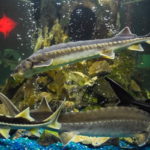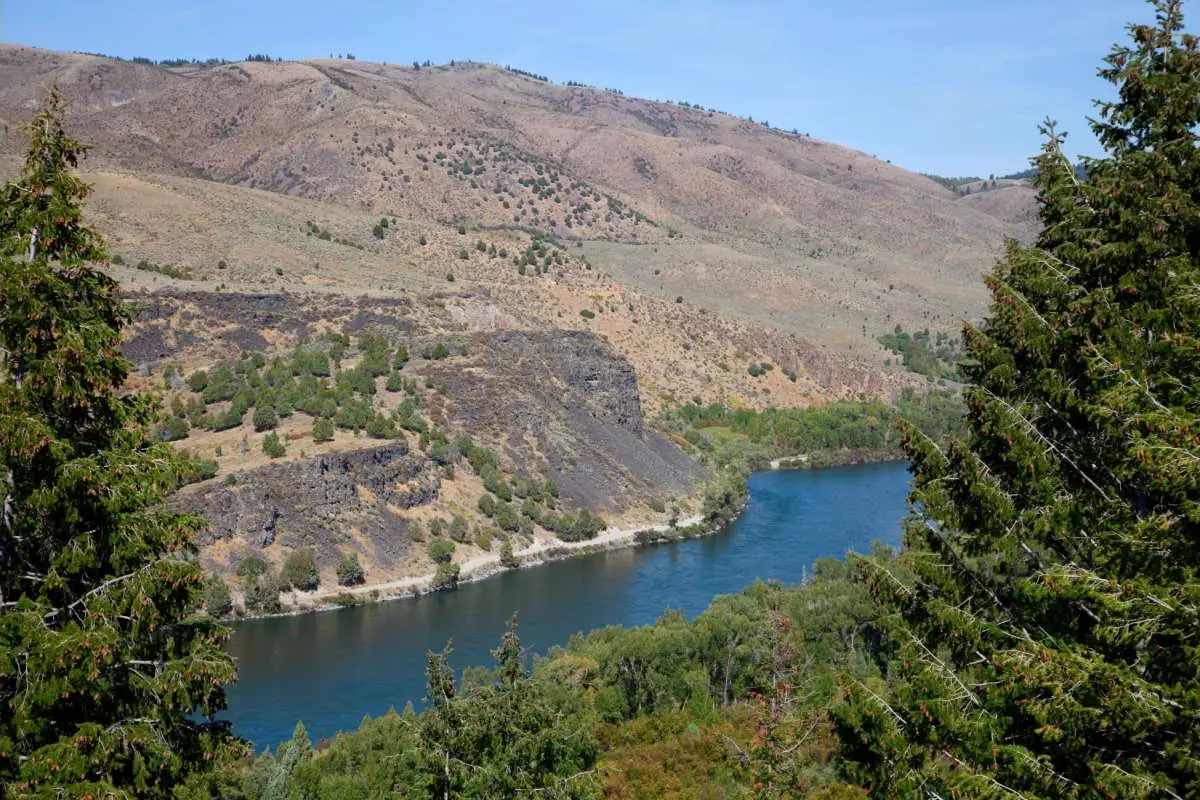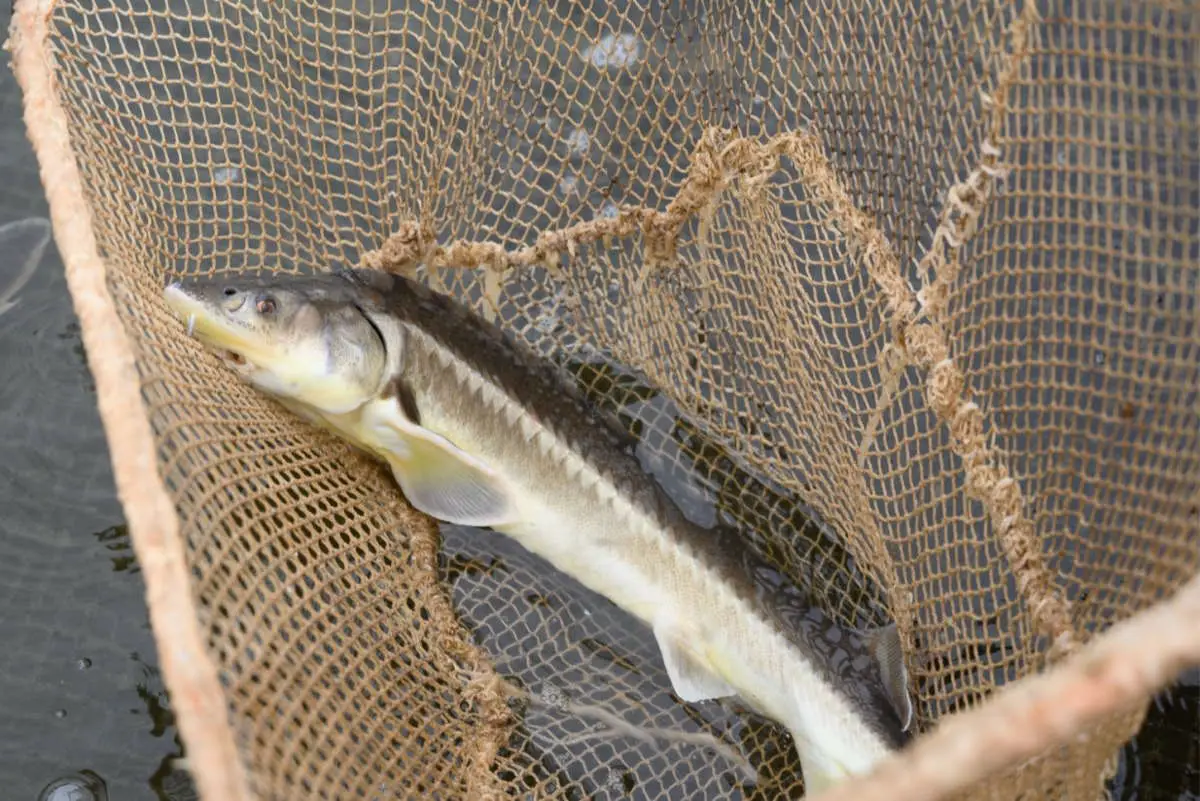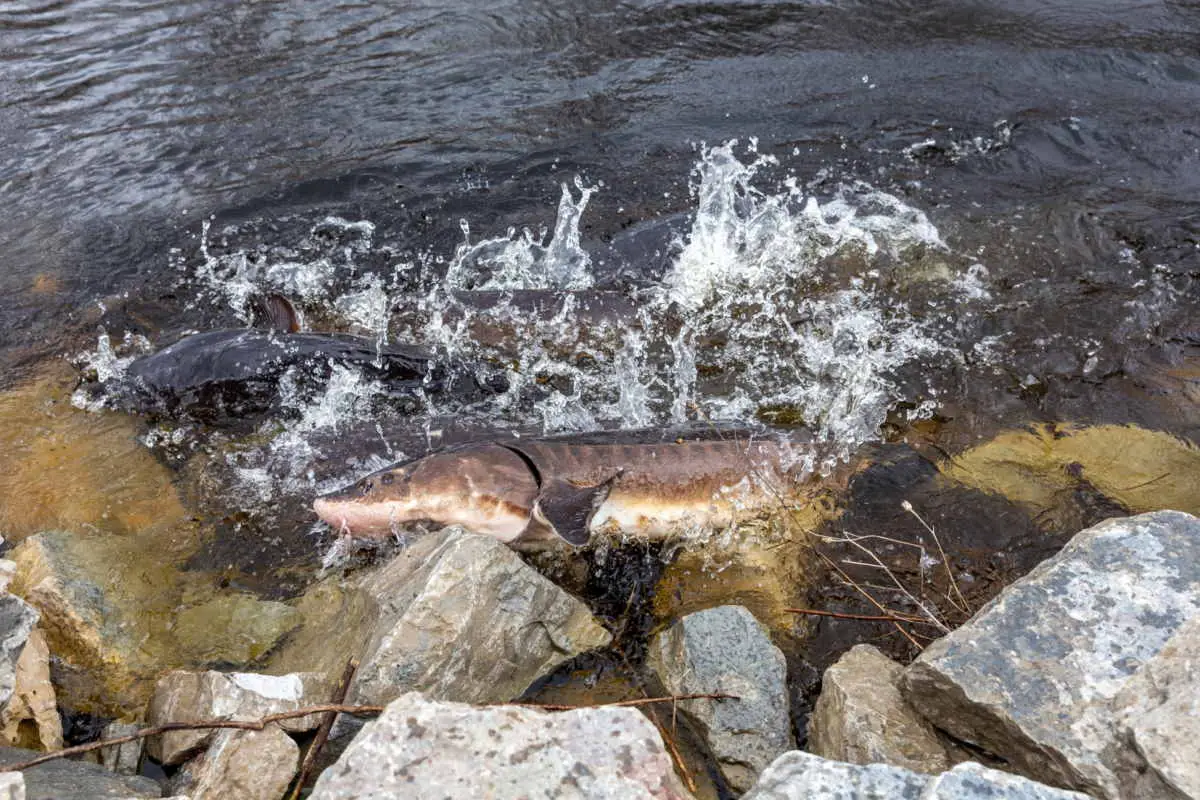Sturgeon are found throughout the world’s rivers and waterways in the northern hemisphere. Specifically, sturgeon take up residence from Scandinavia to Europe, North America to Asia…
They tend to live in larger bodies of water but move into smaller rivers to spawn in fast-moving water with rocky bottoms. Some sturgeon are known to migrate hundreds of miles upstream during their spawning season.
Most sturgeon live primarily in freshwater, but some swim in saltwater as well, usually to find food. For the most part, every subspecies of sturgeon inhabits an area or range and can overlap a bit.
Do Sturgeon Live in Lakes?
Some sturgeon species live in lakes. Specifically, lake sturgeon are known to inhabit lakes in North America, like lake Winnebago. Other species of sturgeon inhabit some lakes, like the shovelnose sturgeon.
Many sturgeon species became landlocked thousands of years ago by recceing water levels or, more recently, dams. These sturgeon tend to be small due to lower food supply. Also, spawning is more difficult for sturgeon that become landlocked. Because of sturgeon’s long life span, they tend to have multiple opportunities to spawn when conditions change their environment.
Do Sturgeon Live in Oceans?
Sturgeon can live in oceans but tend to pass through on the way to other locations to find food. It is common for sturgeon to move from one estuary to another during the course of their lives.
When the estuary becomes overpopulated or the food supply drops, sturgeon will move to the ocean. Then they travel along the coast to the next estuary in search of plentiful food sources.
Another reason that sturgeon avoid the ocean is that they are not deep-water fish. Sturgeon feed on the bottom. They will sit and wait for food to come to them in divots on the bottom or feed on flats during high tides.
Do Sturgeon Live in Seas?
You can find sturgeon in seas, such as the Black Sea and the Caspian Sea. Many biologists consider the Great Lakes to have a similar environment to most seas, minus the saltwater, of course.
Usually, you will find the sturgeon in areas around 20 feet deep with mixed bottoms so they can suck food up off the seafloor. Sturgeon don’t dive particularly deep, so anything deeper than 100 feet would be rare to encounter one. Most are found close to shore or feeding on flats and sand bars.
Do Sturgeon Live in Rivers?
Most sturgeon in the world live in freshwater and prefer large rivers with deltas or estuaries. Sturgeon like to conserve energy, and to do so, they wait for food to come to them.
As water flows down the river, it carries organic matter and into divots at the bottom. Sturgeon wait in those holes in the bottom for food to roll right to them.
In other cases, the sturgeon will go mudflats in search of freshwater clams or small invertebrates. They do tend to do this at night but will do it at any time when food is plentiful.
Also, rivers tend to have better oxygen content, which all fish like. However, rivers can have seasonal temperature swings and low water flow toward the end of summer.
A few major rivers that have sturgeon include the Mississippi, Fraser, Sacramento, and Columbia Rivers.
Do Sturgeon live in Estuaries?
Sturgeons love the estuary and deltas because of the abundance of their favorite foods. Juvenile sturgeon spend many years of their life cycle in the estuary.
Clams, shrimp, small fish, assorted invertebrates can be very plentiful in an estuary or large delta. This makes it a perfect environment for sturgeon to consume large amounts of food and grow rapidly.
The dark sand backgrounds in most estuaries make an excellent backdrop for a young sturgeon to hide. Shifting tides also work well for the young sturgeon as they stick to the bottom when they what to stay put and come to the top to hitch a ride.
When sturgeon get larger, they tend to spend less time in the estuary and head upriver for faster water with food that drifts down the bottom for easy work.
Do Sturgeon Live in Creeks?
Sturgeon can’t live in creeks but may spawn in larger creeks or streams with fast water and rocky bottoms. The fish gather together and release the sperm and eggs simultaneously.
Once the eggs are fertilized, they drop to the bottom and stick to the rocks. Roughly seven days later, the eggs hatch, and the baby sturgeon(larvae).
At this stage, they are washed downstream until they are large enough to swim freely. At night time, they swim near the surface where the current carries them downriver.
In the daytime, they stay near the bottom to hide from predators. At this point, they can end up far from the creek, possibly in the estuary where they will spend the next few years.





